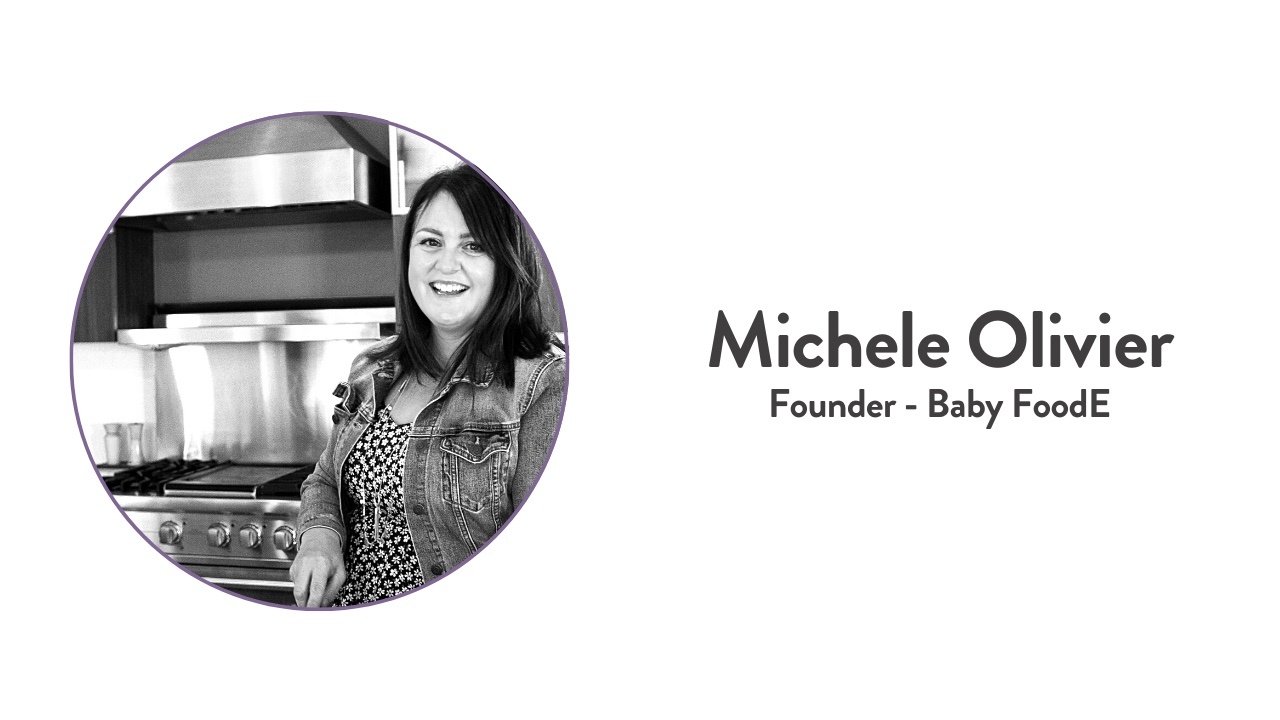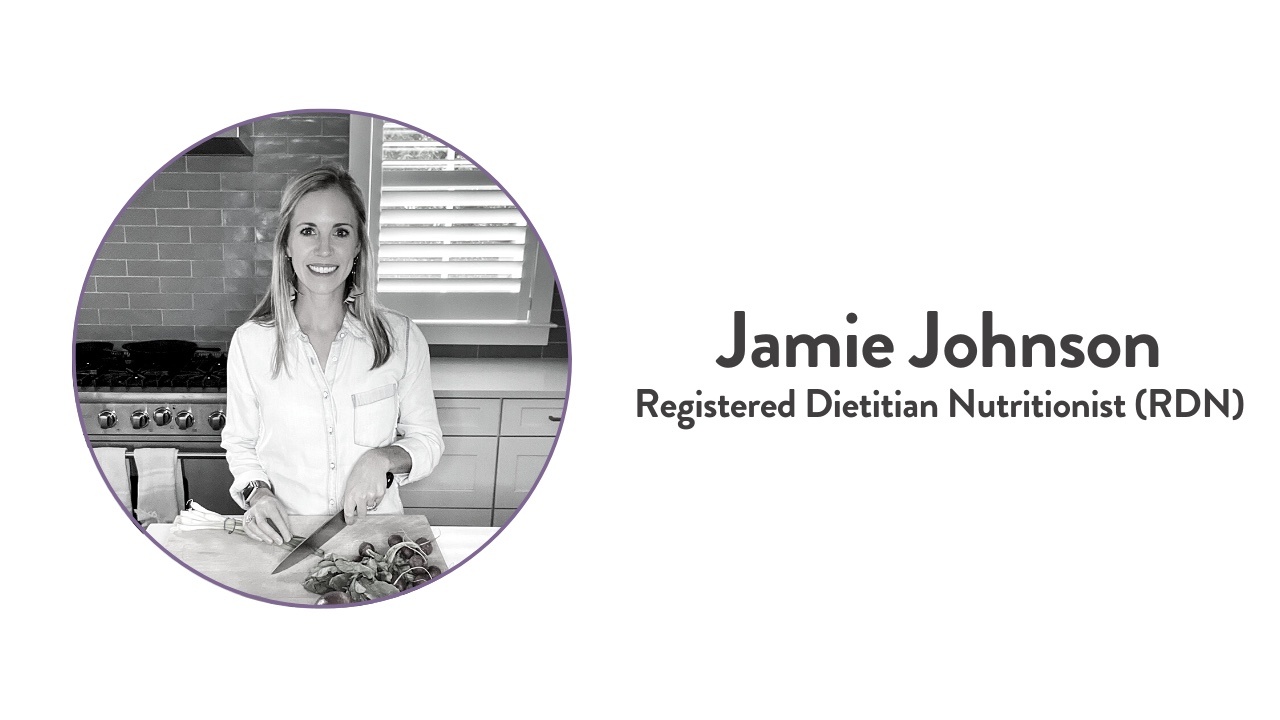Nutritional Information
Bananas are a great first food for babies because they are loaded with essential nutrients for growing baby and can be eaten whole, mashed, or mixed into baked goods. They are a good source of fiber, vitamin C, manganese and potassium, and they are high in vitamin B6.
- They are a good source of potassium which helps maintain hydration and a normal heartbeat.
- The fiber in bananas can help prevent constipation and bloating
- They are also a good food to serve when baby has an upset stomach
- They are high in carbohydrates which give energy
Banana Tip: Ripe bananas have more sugar in them and are great to use in baked goods as a natural sweetener. Underripe bananas will have more prebiotic fiber to help feed the gut bacteria in baby’s gut.
When can you introduce banana to your baby?
Are bananas a choking hazard?
Are bananas a common allergen?
Do bananas cause constipation for babies?
How to Serve Bananas
You can serve bananas in puree form, mashed, cut into long strips or spears, or in smaller pieces as your baby gets older. Once you’ve introduced other common allergens, bananas can be a great way to add flavor and texture to smoothies, yogurt, pancakes, oatmeal, or breads.
6+ Months
See below for these recipes.
Puree
Self-Feeding: Baby-Led Weaning
- Banana for Baby-Led Weaning: banana with some peel, long strips rolled in puffs, or as a puree
7+ Months
Stage Two Purees
9+ Months
Stage Three Purees
Self-Feeding: Finger Foods
- Banana for Self-Feeding: banana with some peel, long strips rolled in puffs, or small chunks
12-36 Months
Toddler Recipes
Recipes
Banana Puree
Prep Time: 5 minutes
Cook Time: 0 minutes
Servings: 10 ounces
Age: 6+ months
Ingredients
- 2 ripe bananas
- pinch cinnamon (optional)
Instructions
-
Place the bananas and cinnamon into a blender or food processor and puree until smooth and creamy, roughly 60-90 seconds, scraping down sides if needed. If the puree is too thick, add in some liquid (fresh breastmilk, formula or water) in tablespoon increments until you have your desired consistency.
-
Serve or store for another meal.
Notes
Age: 6 months and up
Yield: roughly 10 ounces
Storage: to store this puree, you can add in a splash of fresh lemon juice and then place the puree into an air-tight container in the fridge for up to 2 days or in the freezer for up to 3 months.
Banana for Self Feeding
Bananas are a good food for your baby to self-feed, whether for baby-led weaning, which happens around 6 months of age, or during the finger foods stage at 9 months.
6+ months: Handheld banana with some peel, long strips (can be rolled in crushed puffs), or a puree: This helps baby grasp it better since bananas are slippery and can be hard to grab. You can offer purees and still allow your baby to lead the way with self-feeding by placing some spoonfuls directly on your baby's tray or bowl to let them explore on their own, or you can hand them a pre-loaded self-feeding spoon.
9+ months: chunks or long strips: Babies are developing their pincer grasp at this age so chunks can be a great way for babies to practice. If bananas still seem to be slipping out of your baby’s hand, rolling them in crushed puffs, nuts or hemp seeds can help your baby grasp them.
Prep Time: 5 minutes
Cook Time: 0 minutes
Servings: 1-2 servings
Age: 6+ months
Ingredients
- 1/2 ripe banana
Instructions
-
Handheld Banana: Cut a 4-5 inch section of banana off from the top. Cut off the peel, leaving roughly 1-2 inches of exposed banana. Do not cut all the way through the banana, just the peel. Then you can remove the peel away and hand the stem of the banana to your baby.
- Chunks of Banana: Peel half of a banana and using your fingernails, break the banana into chunks along the seem of the banana. It should easily break into chunks.
- Rolled Banana Strips: Cut a banana into strips and roll them in a little bit of topping of your liking such as, crushed puffs, finely chopped nuts or hemp seeds.
Notes
Age: 6+ months
Yield: 1 serving
Additional Spices: Feel free to add in a pinch of cinnamon, cloves, nutmeg, or ground coriander to the bananas before serving.
Puree for Self-Feeding: Yes, it can be done! You can offer purees and still allow your baby to lead the way with self-feeding.
- Place a few spoonfuls of purees directly on the tray or in a bowl for your baby to dip fingers into. Model how to dip your fingers into the puree and bring them to your mouth, to taste some.
- Offer your baby a pre-loaded self-feeding utensil and hold it out for them to grasp or set on their tray.
- Use a solid food as a dipper. You can also offer a soft stick-shaped piece of food, such as a soft roasted carrot or bread lightly toasted and cut into strips to dip into the puree.
Video
Feeding Tips
- Bananas are slippery so keeping some of the peel on and rolling them in crushed puffs, nuts or hemps seeds can help baby grasp it better
- Choose ripe, yellow, and softer (but not mushy) bananas with a few small brown spots. Do not serve baby green or underripe bananas.
- We love always having bananas on hand because there’s no prep or cooking involved
More Banana Recipes
How to Pick & Store Bananas
How to Pick Bananas
- Color: The ideal color for peak ripeness are bananas that are a vibrant yellow color with a little bit of green at each end.
- Firmness: Choose bananas that are full and plump, with a firm texture.
- No cuts or bruises: Some speckled brown spots are okay, but avoid those with deep, dark spots on the peel.
- Choose with usage in mind: If you are planning to eat the bananas immediately, choose bright yellow bananas with little to no green at the ends (some light brown speckling is okay); if you are planning to eat in a few days, choose bright yellow bananas with more green at the ends. These bananas will ripen over a few days.
How to Store Bananas
- Store bananas at room temperature, away from direct sunlight and heat.
- Store bananas so that they are not touching other fruit. As bananas ripen, they will hasten the ripening of other fruits around them.
- To slow ripening, store bananas in the fridge. The skin will turn brown but the fruit will be okay. Allow bananas to come to room temperature before eating for the best flavor.
- To speed up ripening, place bananas in an open paper bag on the counter.
- Freeze bananas for later use by slicing them and laying flat on a baking sheet with parchment paper. Place in the freezer until frozen and then immediately place in a freezer-safe bag for later use.
- Frozen bananas are best used within 6 months.
Seasonings that pair well with bananas:
- Allspice
- Cardamon
- Cinnamon
- Clove
- Ginger
- Nutmeg
- Vanilla
Banana Facts
- Bananas are one of the world’s most consumed fruits, with the average American eating 27 pounds of bananas per year!
- Bananas are not included on the “dirty dozen” - a list of 12 foods that you should buy organic. The banana’s peel limits exposure to pesticide residue. However, conventional banana farming is pesticide-intensive, compared to organically grown bananas, and can harm the environment and health of those who farm them. Choosing organic can be helpful, but non-organic is still better than no bananas at all.
- If you have an abundance of bananas, you can easily freeze them. Frozen bananas are perfect for tossing in smoothies, using for breads, pancakes or even banana soft serve “ice cream!”
Reviewed and Co-Written By












